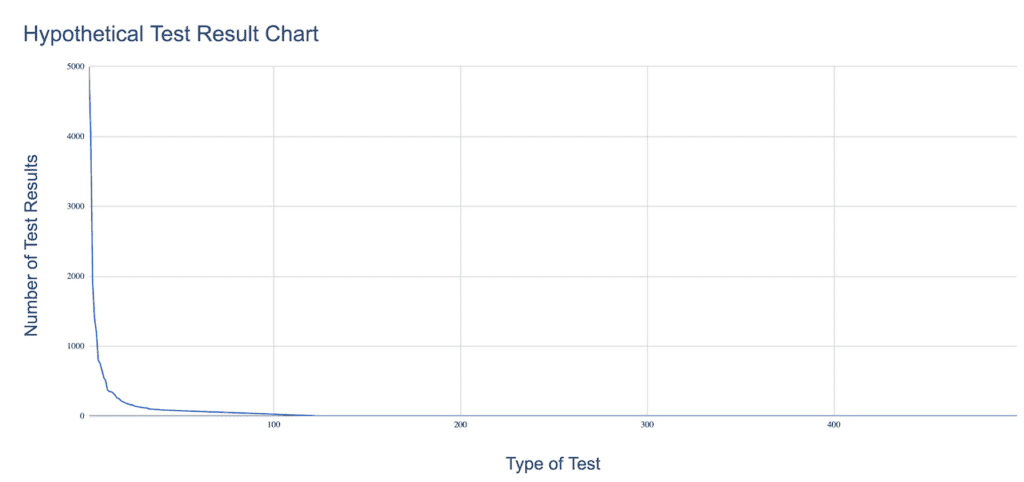
Inconsistencies in clinical terminologies present many challenges to HIEs and other organizations, and inconsistent lab codes are perhaps the greatest challenge of all.
Some HIEs say that 45% to 50% of all collected data is local and unusable unless it is mapped to a standard. However, the percentages on lab data are even worse.
When it comes to lab tests, proprietary local codes are the prevailing means of clinical documentation. The use of LOINC codes to document clinical lab tests is still the exception rather than the rule. According to the Ohio Health Information Partnership’s 2013 survey, [only] “12 percent of its hospital participants were using LOINC codes to send results to providers.”
Mapping from proprietary lab codes to a standard terminology, such as LOINC, has historically required an army of people to manage. When these resources are in short supply, mapping falls short of requirements and expectations. In turn, there are implications for a range of data uses, including patient outcome assessment.
Making lab data more understandable improves analytics and patient safety.
Data Quantity and Quality in Healthcare
There is an abundance of data in healthcare, and this quantity is measured in exabytes. To put this amount of data in perspective, there are hundreds of times more healthcare data created every year than the estimated sum of all the words ever spoken by humans since the dawn of time.
As Colin Hung of Healthcare IT Today puts it in the video below, the topic of healthcare data quality is not sexy—and therefore does not get a lot of media attention. But data quality is vital. Data flow needs to be regulated too in order to not overwhelm clinicians and care managers. For example, there is now “alert fatigue” from too many alerts.
In the same video, Todd Rogow, CEO of Healthix, says that there is a need for clinicians to get the right data at the right time and in the right amount. This data establishes clinicians’ trust, which makes them want to use the information—and use it to benefit their patients.
The Root of the Lab Codes Problem
How did labs get so far off track from coding standards?
As somewhat “outlier operations” within healthcare, most labs have not naturally aligned their billing and EHR systems’ terminologies with wider healthcare standards, which has caused a disconnect between labs’ clinical documentation needs and optimizing for external communication workflows to evolve.
Unfortunately, there is no quick fix for this widespread code alignment.
The Results of Inconsistent Lab Codes
Inconsistent lab codes have a number of far-reaching effects.
Providers & their patients
Inconsistent lab codes can have the following effects on providers:
- Billing errors
- Missed diagnoses
- Less time spent with patients
- Unnecessary patient retesting
HIEs
As data aggregators, HIEs rely on accurate lab data for:
- Clinical documentation improvement
- Public health reporting
- Population health initiatives
- Medical research
HIEs often rely on aggregated lab data to complete work for population health initiatives, medical research, public health reporting, and clinical documentation improvement.
Standardizing Lab Codes
The manual normalization of codes onto a standard terminology is very time-consuming and resource-intensive. This process is where the AI subsets of machine learning & deep learning come into play. It’s much faster for a robot to match up data, especially when there is highly ambiguous source data.
Where to begin?
Rather than trying to standardize the entire universe of lab codes, it’s best to start at the top of the curve—i.e., the one that can be seen in a standard Pareto chart.

The Pareto Principle generally applies to lab codes. About 20% of lab codes represent 80% of test results.
The required partnership
It takes a partnership of three “best of breed” entities to effectively apply the AI-based normalization techniques—a technology vendor, an integrator, and a customer. This video shows an example of that partnership:
With the right partnership in place, it’s possible for an HIE to quickly identify and standardize 100% of the top 800 lab tests, which make up 99% of the lab results received.
In the future, this technology will only continue to advance. Configurable algorithms will soon be available, which will allow for normalizing a higher percentage of lab test results further down the curve.
 To learn more or to get a quote, please email Steve McGlothlin or fill in our Contact Us form.
To learn more or to get a quote, please email Steve McGlothlin or fill in our Contact Us form.
Steve has more than two decades of experience helping to ensure customer success with solutions for integration, health information exchanges, and high-performance database engines. When he’s not solving #HealthIT problems, you can find Steve fishing the lakes of Illinois and Wisconsin year-round.



